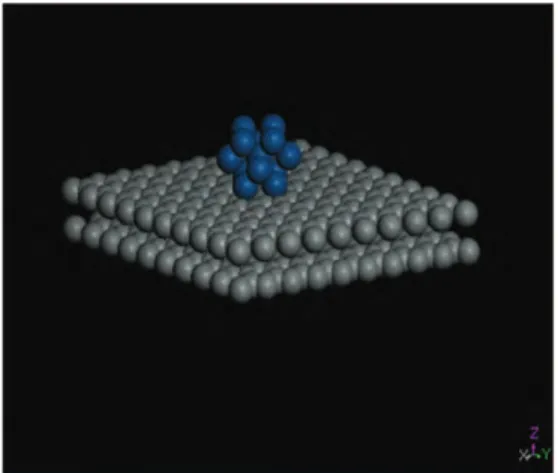Deposition and Characterization of Platinum and Palladium Nanoparticles on Highly Oriented Pyrolytic Graphite
Texto completo
Figure




Documento similar
We have deliberately introduced single carbon vacancies on a graphene monolayer grown on a Pt(111) surface and investigated its impact in the electronic, structural, and
Figure 4.23: Use of the tunable transparency to follow the interaction between graphene C vacancies and the Cu(111) substrate underneath. a) STM image showing a G/Cu(111) sample
We first studied the fluorescence quenching efficacy of undoped graphene as a function of distance, including transverse decay channels, retardation, and graphene-field coupling to
! ! UNIVERSIDAD AUTÓNOMA DE MADRID! Department of Condensed Matter Physics ! ! ! SELF ASSEMBLY OF MOLECULES ON NANOSTRUCTURED GRAPHENE ! Flavio Pendolino! ! ! ! ! ! ! ! ! Madrid, June
On the one hand, the effects of the interaction with a strong interacting Ru(0001) substrate on the lattice dynamics of the graphene, as well as the charge transfer mechanisms arisen
It is clear that more work is needed in order to understand the relative contributions of the ZA, LA and TA modes to the thermal conductivity of supported Gr. From the
We will first address the local electronic structure of graphene with defects with a tight binding model, and then we will proceed to add interactions in the form of a Hubbard model
(Color online) Absorbance of graphene for the double- cavity setup (see Fig. Top right: Absorbance as a function of reflectance. If the wall is impermeable, the fundamental mode of


